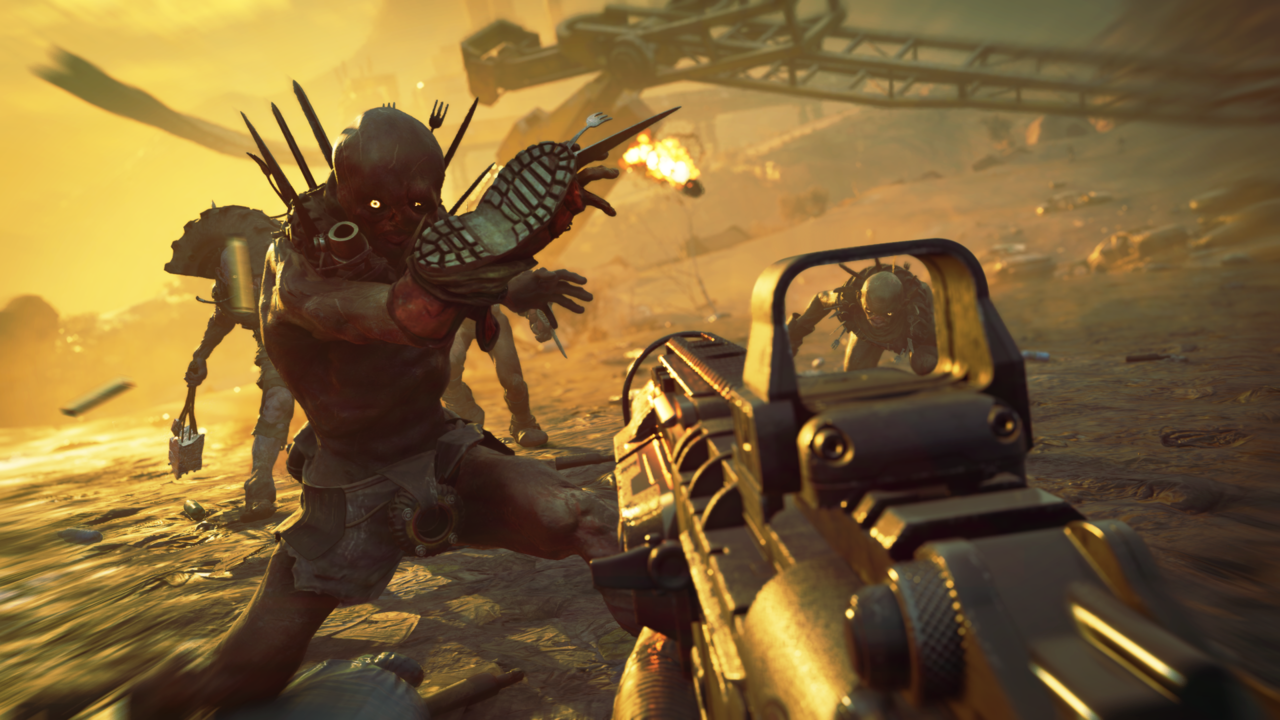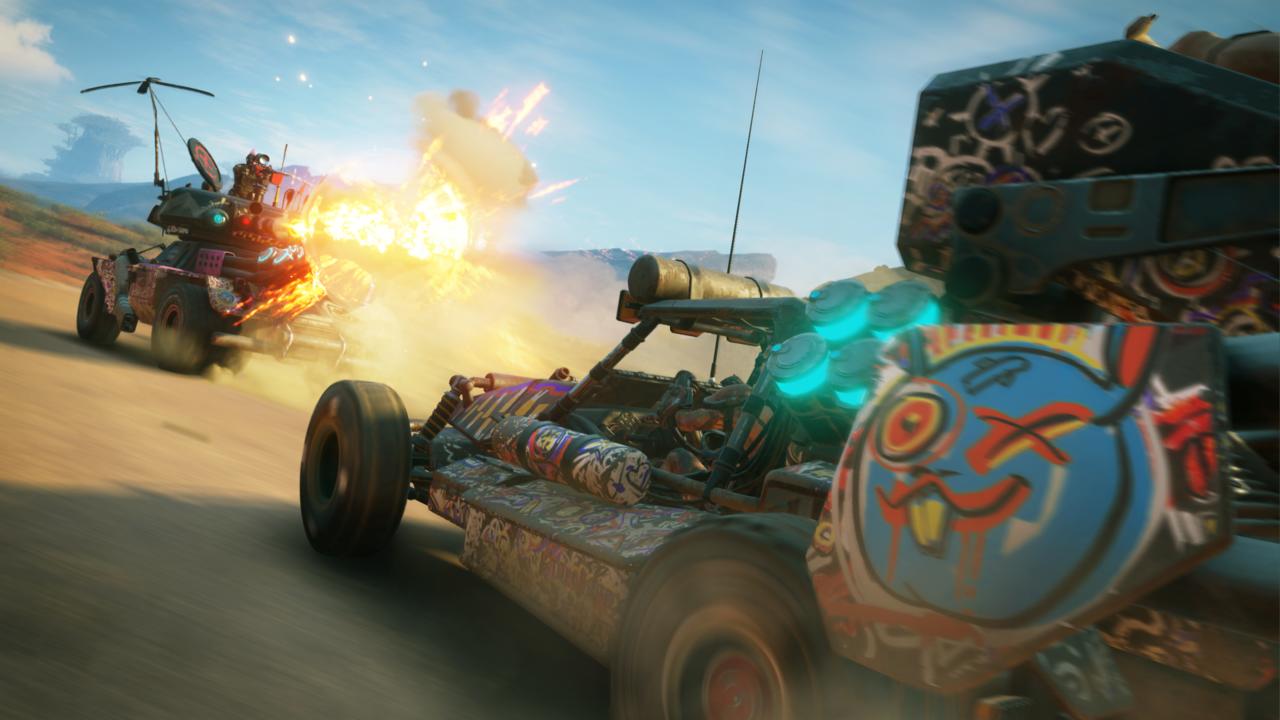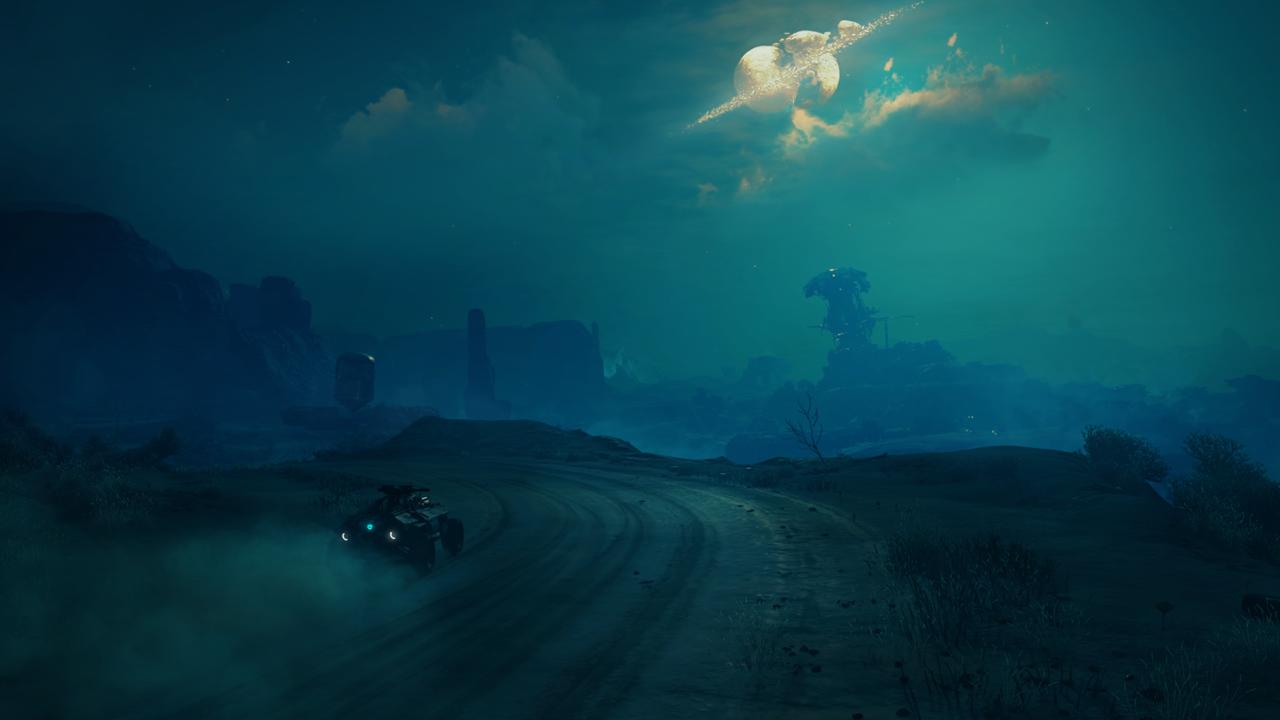Releasing in 2011, Rage from id Software was the Doom developer's first attempt at open-world gameplay. Focusing on a survivor's exploits in the middle of a dangerous post-apocalyptic landscape, with bandits and other threats looking to carve out their own stake on the dwindling resources, you'd face off against dangerous factions and trick out your vehicle to stand up against the many dangers of the land. But upon release, Rage didn't quite hit all the marks it needed to, and it mostly was forgotten after launch--outside of its notoriously abrupt ending. But shortly before E3 2018, Bethesda and id Software revealed plans to give the series another shot with a far more exuberant and visually vibrant approach compared to its more serious predecessor.
Set 30 years after the original, Rage 2 moves far away from the first game's lackluster climax, opting for a fresh start in a more colorful and appealing post-apocalyptic setting. Co-developed with Avalanche Studios--the team behind the Just Cause series and Mad Max--the sequel will channel the developer's strengths for open-world thrills and shenanigans, coupled with the punchy action of id Software's style of gameplay. During QuakeCon, we spoke with id Software studio director Tim Willits about what's new for Rage 2, collaborating with Avalanche Studios, and the important, if painful lessons they learned from the previous game.

Can you talk about how the reception has been thus far for Rage 2? It seemed like people had to overcome their surprise with seeing Rage again before becoming interested in what the sequel has to offer.
Tim Willits: Yeah, the reception really has been great because people can see that Rage 2 will deliver on the promise that we had with Rage 1. With the original game, one of the issues we had was that the technology was preventing us from having a true open world. So you had your levels load in your first person, your levels load in racing, and your levels load into the wasteland. Whereas in Rage 2, it's just all open. There's no level loading, you just go. You go to your objectives, your missions, you jump out, and you just play.
So you can get a sense for, "Yeah, this feels like an id game." We worked really closely with the Avalanche team on that true id-style combat. And with the Avalanche's Apex engine and working with their team and seeing what their experience really kind of taught me, specifically how to kind of think in a more open world--where the scenarios are much less linear, and the story is more open--you can kind of go anywhere and do anything. So it's really been nice working with this new open world technology.
When you look at Rage 2, are you constantly thinking that this is what the original game should have been?
Willits: Yes. When we first started on the original Rage, we thought that the magic of Megatexture technology was going to solve all these problems--but it didn't. So [Rage 2] was always kind of the vision, we were just never able to execute it. And then Avalanche was like, "This is what we do," and working with them has been great, and they like working in the Rage universe because it has an established kind of fiction and setting, and people kind of understand it, but we've also set the game in the future.
You're a new protagonist, you talk, and we have a better story with better action, more vehicles, characters, and weapons. So we can go anywhere and do anything, creatively, but we also come from a known place. So people can relate to it easier, people can understand it easier, people can be like, "I get what that was, and now I see what you're doing with it." So it's been nice for us at id Software and for Avalanche to work in the Rage universe. You don't have to play the original because we set it far enough in the future, and that it's a completely different kind of standalone experience.
STAR WARS: Prequel Pack - Official Reveal Trailer DEAD OR ALIVE Xtreme Venus Vacation PRISM - Official 2nd Trailer Phantom Blade Zero - 6 Minute "Year of the Snake" Gameplay Trailer The Hundred Line -Last Defense Academy-: Character Trailer 1 GUILTY GEAR STRIVE: DUAL RULERS - Official Main Trailer Black Ops 6 & Warzone - Official Season 02 Launch Trailer Marvel Rivals | The Spring Festival Trailer Kingdom Come: Deliverance 2 Roadmap Trailer Zenless Zone Zero - Astra Yao Character Demo | "Ridu Holidays" BlazBlue Entropy Effect - Hazama Character DLC Gameplay Reveal Trailer Helskate Launch Trailer Code Violet | Announcement Trailer
Please enter your date of birth to view this video
By clicking 'enter', you agree to GameSpot's
Terms of Use and Privacy Policy
So was having Avalanche Studios come on board in development an absolutely vital part in Rage 2 getting the greenlight?
Willits: Yes. Yes. Yes, we definitely wanted to do it, but we knew we needed that open-world technology, and a company with experience. So yes, I would say they were critical. One of the most exciting things about this game is how distracting the world is. Like the guys will call me, and they'll say, "Hey we put this mission in, can you go check it out?" I'm like, "Yeah, yeah. Hold on. I'll call you back in like an hour." And then they'll call me a couple hours later, "What are you doing?" I was like, "Oh sorry, I got the monster truck, and I was trying to jump this ravine," and so there's just a lot of emergent fun gameplay that you can just go and do stuff. Like you run across a band of mutants walking through the desert, and you can run them over, and then do cool stuff like that.
The style and tone in this game feels more like the Mad Max: Fury Road approach to the post-apocalypse, where there's a lot more color and personality. Was that a particular thing you wanted to change from the original game?
Willits: Yes. A lot of movies and games set in the post-apocalypse tend to use every shade of grey and brown. So that's why we wanted to kind of push everything forward, and get away from this post-apocalyptic world, and make it more of a post-post-apocalyptic, and a lot of that has to do with technology again, where we can build forests and swamps, water, and have this vegetation. There's many different biomes in the game, which brought a lot of richness to the environment, which also helps you identify where you're going, where you've been.
So the more colorful environments led to more colorful characters, weapons, items, and that ultimately led to a more colorful campaign. We have pink, and we just kind of pushed everything. And people really embraced the kind of color in the game. People love it, they love that kind of signature color.

What would you say were some of the biggest lessons you took away from working on the original game, which are more apparent now that you have spent time with the new game?
Willits: Don't try to make an open-world game with the technology that's not open world. [laughs] That one. But, people love to experience emergent gameplay, and that's signature Avalanche style. Rage really was too directed, it was too, "go here, now do this." There's much more freedom of choice, freedom of your ability to play the way you want, and it's actually more approachable. And yes, I know that what you played seemed very id style, and it kind of forced you in this building, but when you get the real game, you get there, you can knock out all the guys upfront, drop mortars, shoot them from a distance. You can go halfway in, and come back and finish it later. You can do that. You have a lot more choice and opportunity than in the previous game.
And you're free to actually move around in any direction in the world you want?
Willits: So you start in a home base, so we can teach you some basic mechanics and stuff, it's very typical. And then once you leave the island--then yeah, that's it. You go anywhere you want. You can even go all the way to the end and try to fight the boss--more power to you. We have some key characters that you interact with, that kind of propel the story, and you need to do certain things to kind of move the progression along, but you can skip a lot of that as well, if you want. There is no real golden path, but there [are] some golden things you should do before you go before you go and fight the boss.

What was one of the biggest challenges you had to face with this game?
Willits: Convincing everyone to do it, really. It was really opportunity meets preparation. I mean how often do you have Avalanche Studios that wrapped up a game, and most companies today, they lock themselves up for years, and then for us, yeah, the bulk of the team is working on the Doom [sequel], but we have guys working on the other projects. So just the timing of catching them at that moment, when we were ready, and they were ready. But you still have to sell it to people that you work with, "I got this idea, Avalanche and id," and everyone's like, "that's awesome," but even in the first presentation that we gave to the whole company, the second slide was Avalanche plus id, and most people were like, "That's cool." I mean you can't just call up a studio and say, "Hey, let's make a game." It's all huge things have to shift and move and line up. Like planets, almost.

